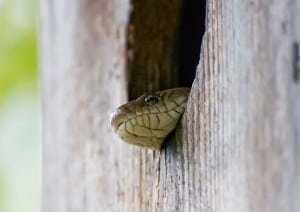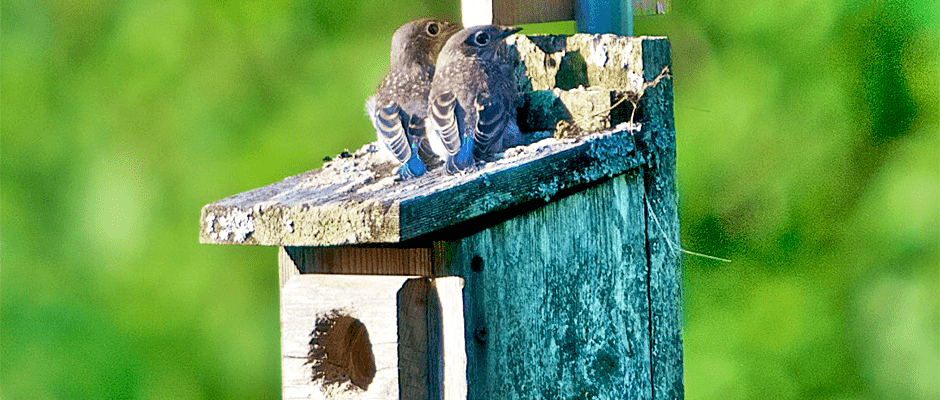Share this article
How to protect nest boxes from predators
Nest box guards work, but the most effective kinds aren’t the ones most people use, according to new research presented during TWS’ 23rd Annual Conference in Raleigh, N.C.
Today, nest boxes are widely used, both by bird lovers as well as researchers and conservationists. But they don’t always serve as the safe shelters humans intend.
“Studies have shown that over time, predators can learn locations of nest boxes. So potentially as they age, next boxes can become more of an ecological trap,” said Robyn Bailey, a biologist at the Cornell Lab of Ornithology, who presented the research in a session on avian ecology.

A snake peeks out from the entrance of a nest box intended for birds. Some types of predator guards can help prevent snakes from climbing into nest boxes. ©Colleen
People use a variety of devices to prevent predators from raiding nest boxes. But until now, it wasn’t clear how well these nest guards worked, said Bailey. She and her colleagues conducted the first large-scale study of nest guard effectiveness, comparing several common guard designs. The data came from NestWatch, a citizen science project in which volunteer birdwatchers find nests and monitor them until the chicks either fledge or perish. Bailey and her colleagues examined records of about 16,000 nesting attempts by more than 32 species of birds.
Compared with unprotected nests, nests in boxes with predator guards were about 5.2 percent more likely to have at least one chick survive, said Bailey. All the different designs helped, and none dramatically outperformed the others. But cone-shaped guards that fit over the support pole appeared to have a slight advantage, protecting chicks more consistently than alternatives.
Although cone-shaped guards worked the best, they weren’t the most popular design, making up only 9 percent of guards in the study. In contrast, 53 percent of guards used cylindrical “stovepipe” designs, while 20 percent worked by extending the opening of the box. Using multiple types of protectors on the same nest box didn’t seem to help.
The findings suggest that nest guards are worth using, although Bailey cautions against placing too much trust in them.
“There’s really no such thing as a predator-proof box,” she said. “Predators can still get to nests.”
Header Image: Two fledgling bluebirds rest on top of a nest box in New England. The nest box has a predator guard that extends the length of the entrance. ©Distant Hill Gardens








